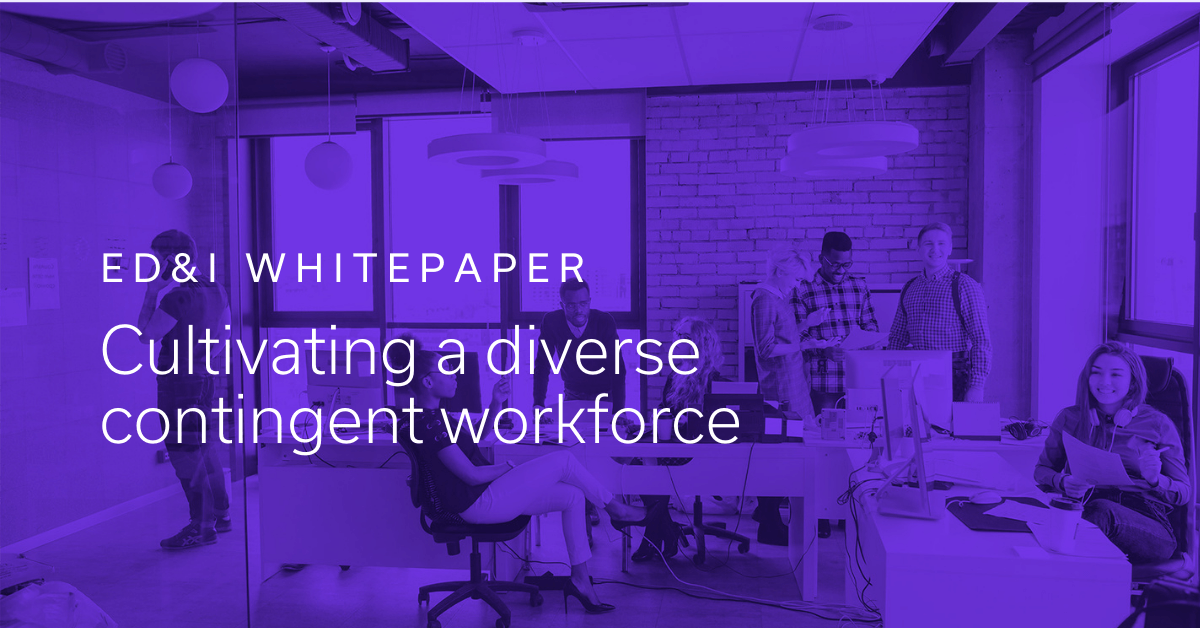Cultivating a diverse contingent workforce
Did you know non-permanent workers make up 40% of the EMEA workforce? In the UK, 77% of executives expect them to overtake the permanent workforce within five years.
This rising prominence is set to have a seismic effect on how organisations approach their Equality, Diversity and Inclusion (ED&I) strategies. As contingent workers become increasingly valuable to organisations – with 52% of those in the UK having a tenure of two years or more – the argument for expanding ED&I initiatives to include the entire workforce has never been stronger.
However, research shows that 60% of employers said that there was no mandate within their company to implement ED&I best practices when hiring contingent workers. By not including such a large percentage of the workforce when addressing ED&I issues, companies fall into the trap of treating a problem while ignoring very important symptoms.
Pursuing these initiatives is not only the right thing to do from a moral perspective. Diverse teams deliver a competitive edge by bringing new styles of thinking and fresh solutions to old problems. A 2019 study by McKinsey found that companies in the top quartile for gender diversity on executive teams were 25% more likely to have above-average profitability than companies in the fourth quartile.
Download our whitepaper to learn:
- How the contingent workforce is set to grow over the next five years
- The benefits of including contingent workers in ED&I strategies
- The challenges and how to overcome them
- How to promote inclusion and reap the rewards of a strong, diverse workforce










